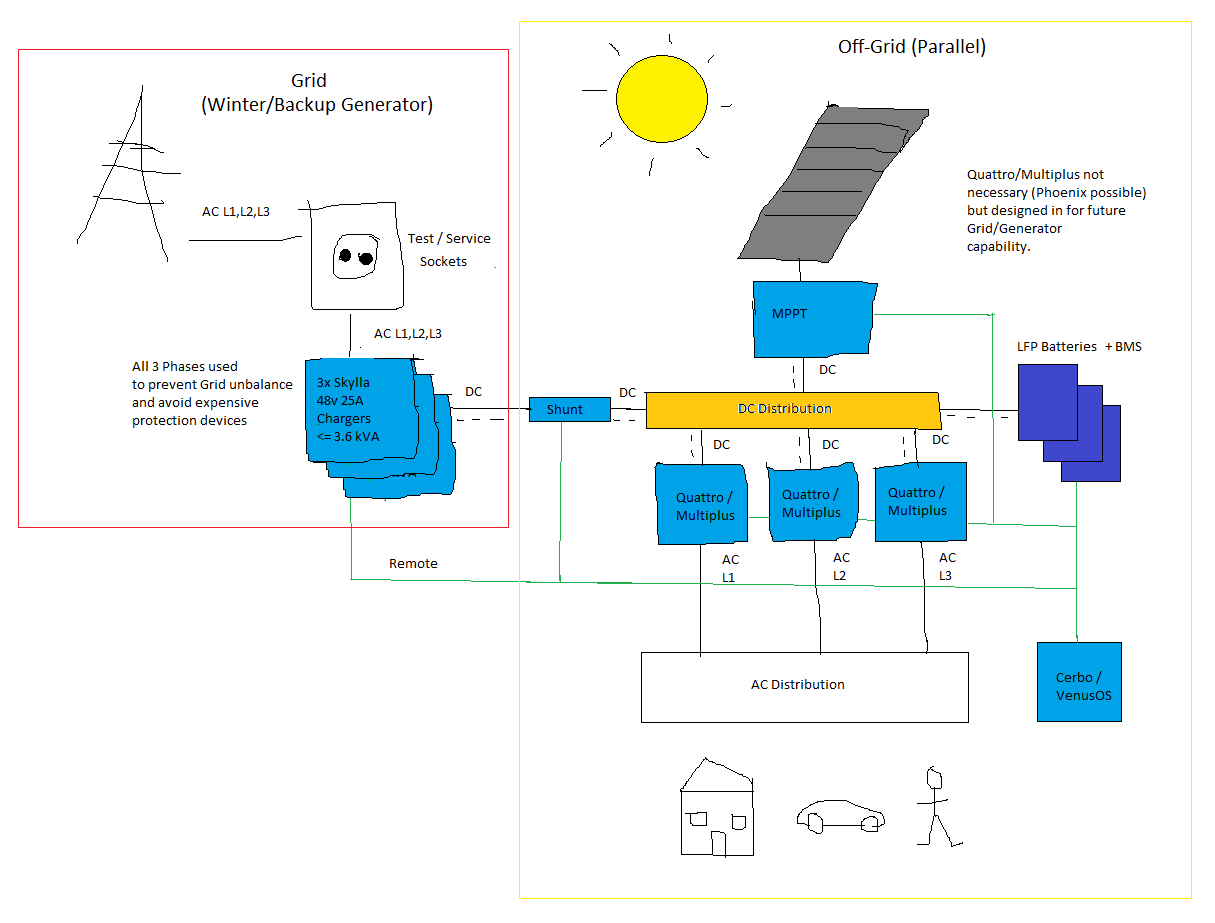In Germany an Off-Grid system with any kind of AC Grid connection (even totally disconnected) on the same piece of land is considered "parallel operation". If we indirectly or directly connect any "generator" (including Multiplus or Quattro regardless of configuration) to the grid we are no longer in parallel operation and a ton of rules, bureaucracy, tax, and even remote control is applicable! So long as the sun shines everything is okay, until winter...
Even with an oversized "full roof" solar array, in winter especially with EVs, the only way I see to cover the couple of months with poor sun BUT keeping ALL the electronics Off-Grid is to trickle CHARGE the batteries from the Grid for a few days/week at a time. For example, like an ad-hoc/mobile EV charger or electric oven we can draw up to 3,6kVA from a "charger" 24/7 without breaking rules to deliver 86kWH/day. Using the battery as a buffer, we can then trickle charge the EVs for a few hours each day, cover heating and entertainment requirements. On the DC side everything is perfect with Multis/Quattros even using DC power directly to reduce battery cycles.
It's important for me to keep ALL the electronics Off-Grid so that I have (almost) complete freedom to choose the power rating and technology within my system. My Grid distribution box will only contain a couple of power sockets for testing plus chargers split evenly across all phases, that's it. The energy company has nothing to say about the rest (common electrical safety respected). ;-)
Of course, the basic assumption here is "not direct or indirectly connected" regards AC/Grid power. Here we only have DC connectivity between the Grid and Off-Grid systems, technically they are only "connected" via magnetic fields.
Now the question...
The Skylla 48v 25A charger appears to be the only option (x3 <= 3.6kVA), is expensive at 900€ each as I have to buy 3 (2700€), but not very smart at all. There is no way to share temperature, voltage sense and BMS control via any VE bus (Direct or CAN). I could get a Multiplus or Quattro at similar prices but those can feed energy back to the grid which is not allowed. I guess I have to use them as dumb chargers with the remote switch/relay and shunt to fill-in for the missed capability.
The Skylla may even have to be set in power supply mode to prevent its charge logic conflicting with the BMS or much higher than spec capacity house battery? :-( I'd really like to keep a pure Victron installation but if it comes down to power supply mode then are there any 3rd party 48v chargers which integrate with VenusOS or a VE bus?
I hear the rules are very simple in the Netherlands, perhaps why Victron don't see this requirement? Then Victron don't make "Smart" 48v chargers because they feel the demand is covered by the Multiplus and Quattro? But these devices CAN return energy to the Grid, so considered "energy production" devices, which IS a problem for evermore people seeking Off-Grid as a solution to the politics or just want freedom of choice.
Or is there something I missed here... For example, is it impossible to return power via the AC2 input of a Quattro with physical/electronic limitation (it would have to be documented also with a schematic as proof for the energy provider)?
